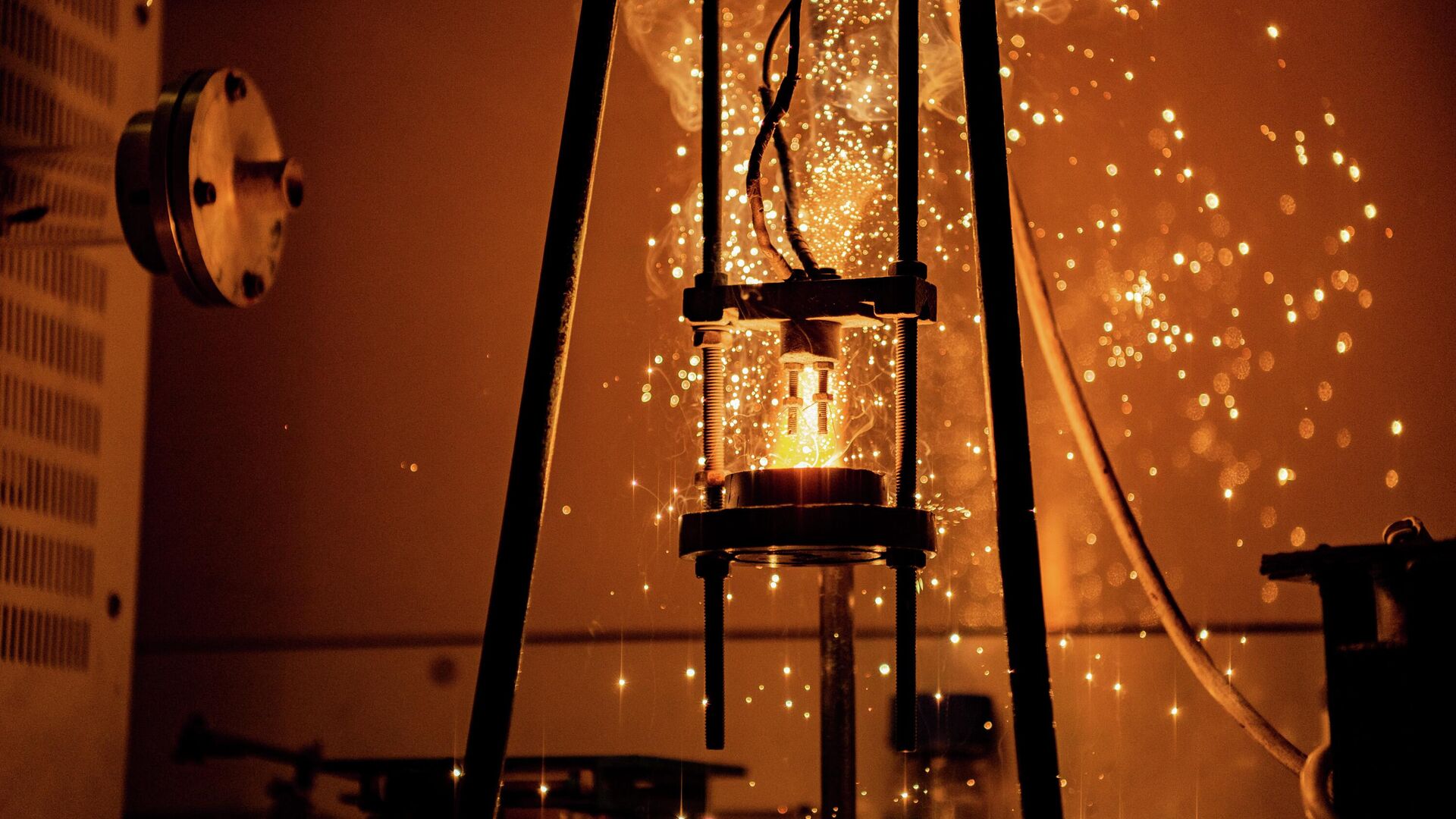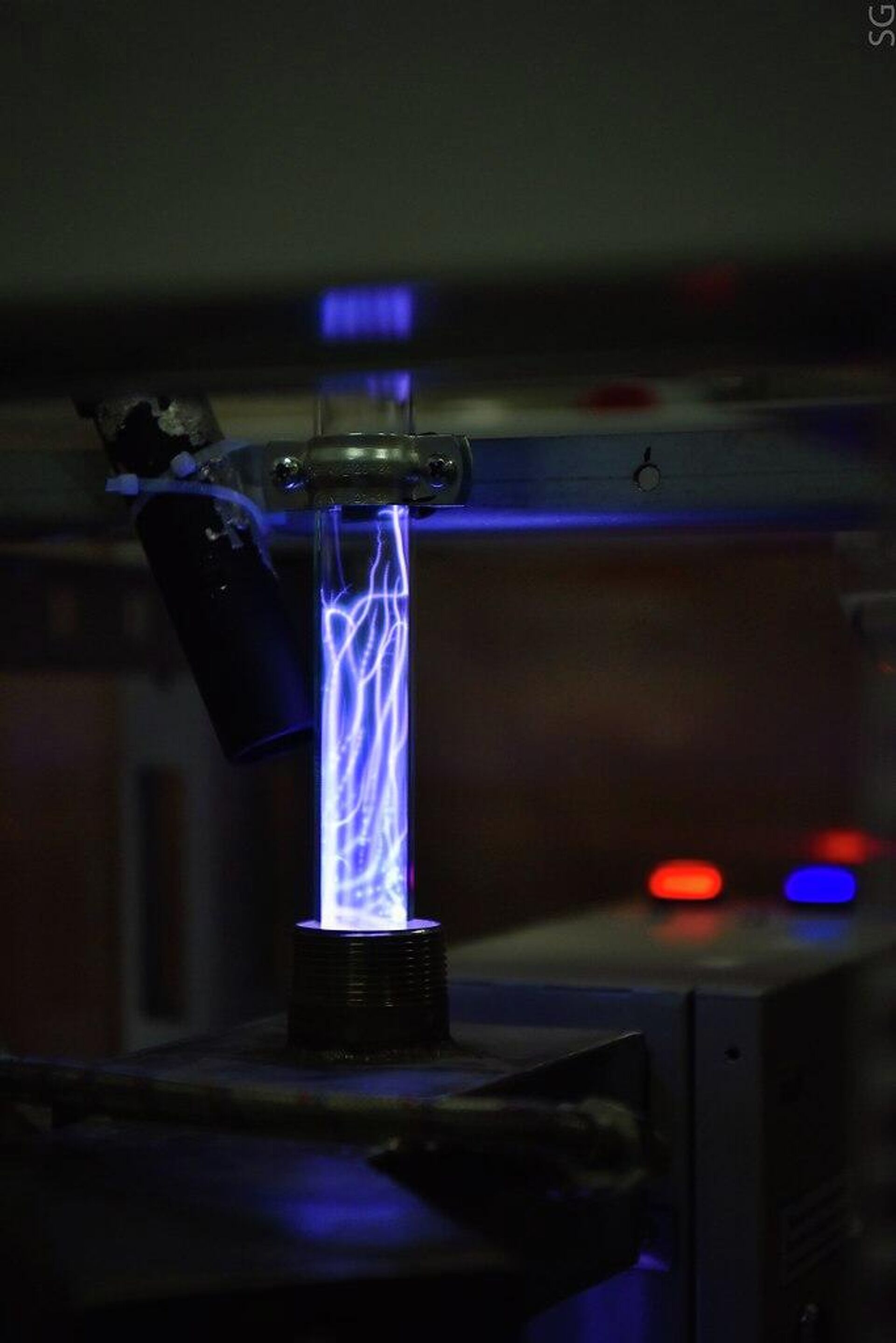https://sputnikglobe.com/20220831/russian-scientists-combine-key-beneficial-effects-in-one-coating-1100184682.html
Russian Scientists Combine Key Beneficial Effects in One Coating
Russian Scientists Combine Key Beneficial Effects in One Coating
Sputnik International
Researchers from the MISIS University of Science and Technology (NUST MISIS) have developed a unique technology for applying protective coatings for critical... 31.08.2022, Sputnik International
2022-08-31T08:09+0000
2022-08-31T08:09+0000
2022-08-31T08:09+0000
science & tech
russia
scientists
russian national university of science and technology (misis)
https://cdn1.img.sputnikglobe.com/img/07e6/08/1e/1100184855_0:156:3001:1844_1920x0_80_0_0_d4b7d39ca6b277e25518c34041ace411.jpg
Scientists at Russia’s MISIS University (NUST MISIS) claim that the originality of their technology lies in the combination of the advantages of three deposition methods based on different physical principles in a single technological vacuum cycle. By applying these methods, they have obtained a multilayer coating with high characteristics of heat, wear, and corrosion resistance.According to the researchers, the original architecture of the resulting coatings gives an increase in resistance to corrosion and high-temperature oxidation of 1.5 times compared with existing solutions. The results of their study were published in the Ceramics International journal. According to him, they first treated the surface with VESA, which transferred material from the Cr3C2–NiAl ceramic electrode to the substrate, providing high adhesion strength between the coating and the substrate.At the next stage, under pulsed cathodic arc evaporation (PCAE), ions coming from the cathode fill defects in the first layer, healing cracks and creating a denser, more homogeneous layer with high corrosion resistance.In the last stage, a flux of atoms is formed by magnetron sputtering (MS), which aligns the surface topography. As a result, a dense heat-resistant top layer is formed, which prevents the diffusion of oxygen from aggressive media.“Studying the structure of each layer using transmission electron microscopy, we found two protective effects: increased load-bearing capacity due to the first VESA layer and sealing of defects during deposition of the next two layers. As a result, we have obtained a three-layer coating that is one and a half times more resistant compared to its basic counterparts to both corrosion and high-temperature oxidation, both in liquid and gaseous media. This is without exaggeration an important result,” Kiryukhantsev-Korneev noted.Scientists estimate that such coatings will increase the service life and performance of critical parts of engine units, oil transfer pumps, and other components that are subject to simultaneous wear and corrosion.The Scientific-Educational Center of Self-Propagating High-Temperature Synthesis (SHS Center), headed by Professor Evgeny Levashov, brings together scientists from NUST MISIS and the Merzhanov Institute of Structural Macrokinetics and Materials Science, Russian Academy of Sciences (ISMAN). In the near future, the scientific team plans to expand the application of the combined technology to modify heat-resistant titanium and nickel alloys used in aircraft construction.
russia
Sputnik International
feedback@sputniknews.com
+74956456601
MIA „Rossiya Segodnya“
2022
Sputnik International
feedback@sputniknews.com
+74956456601
MIA „Rossiya Segodnya“
News
en_EN
Sputnik International
feedback@sputniknews.com
+74956456601
MIA „Rossiya Segodnya“
Researchers from the MISIS University of Science and Technology (NUST MISIS) have developed a unique technology for applying protective coatings for critical components and parts of modern technology.
Sputnik International
Researchers from the MISIS University of Science and Technology (NUST MISIS) have developed a unique technology for applying protective coatings for critical components and parts of modern technology.
2022-08-31T08:09+0000
true
PT1M05S
Sputnik International
feedback@sputniknews.com
+74956456601
MIA „Rossiya Segodnya“
science & tech, russia, scientists, russian national university of science and technology (misis)
science & tech, russia, scientists, russian national university of science and technology (misis)
Russian Scientists Combine Key Beneficial Effects in One Coating
Researchers from the MISIS University of Science and Technology (NUST MISIS) have developed a unique technology for applying protective coatings for critical components and parts of modern technology.
Scientists at Russia’s MISIS University (NUST MISIS) claim that the originality of their technology lies in the combination of the advantages of three deposition methods based on different physical principles in a single technological vacuum cycle. By applying these methods, they have obtained a multilayer coating with high characteristics of heat, wear, and corrosion resistance.
According to the researchers, the original architecture of the resulting coatings gives an increase in resistance to corrosion and high-temperature oxidation of 1.5 times compared with existing solutions. The results of their study were
published in the Ceramics International journal.
“For the first time, we have obtained protective coatings from electrodes based on chromium carbide with a NiAl binder (Cr3C2–NiAl) by sequentially implementing the methods of vacuum electro-spark alloying (VESA), pulsed cathodic arc evaporation (PCAE) and magnetron sputtering (MS) in one facility. The coating has a composite microstructure that allows us to combine the beneficial effects of all three methods,” Philipp Kiryukhantsev-Korneev, head of the “In Situ Diagnostics of Structural Transformations” Laboratory of the Scientific-Educational Center MISIS-ISMAN, said.
According to him, they first treated the surface with VESA, which transferred material from the Cr3C2–NiAl ceramic electrode to the substrate, providing high adhesion strength between the coating and the substrate.
At the next stage, under pulsed cathodic arc evaporation (PCAE), ions coming from the cathode fill defects in the first layer, healing cracks and creating a denser, more homogeneous layer with high corrosion resistance.
In the last stage, a flux of atoms is formed by magnetron sputtering (MS), which aligns the surface topography. As a result, a dense heat-resistant top layer is formed, which prevents the diffusion of oxygen from aggressive media.
“Studying the structure of each layer using transmission electron microscopy, we found two protective effects: increased load-bearing capacity due to the first VESA layer and sealing of defects during deposition of the next two layers. As a result, we have obtained a three-layer coating that is one and a half times more resistant compared to its basic counterparts to both corrosion and high-temperature oxidation, both in liquid and gaseous media. This is without exaggeration an important result,” Kiryukhantsev-Korneev noted.
Scientists estimate that such coatings will increase the service life and performance of critical parts of engine units, oil transfer pumps, and other components that are subject to simultaneous wear and corrosion.
The Scientific-Educational Center of Self-Propagating High-Temperature Synthesis (SHS Center), headed by Professor Evgeny Levashov, brings together scientists from NUST MISIS and the Merzhanov Institute of Structural Macrokinetics and Materials Science, Russian Academy of Sciences (ISMAN). In the near future, the scientific team plans to expand the application of the combined technology to modify heat-resistant titanium and nickel alloys used in aircraft construction.


